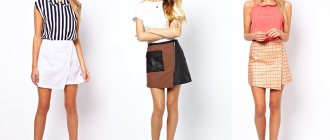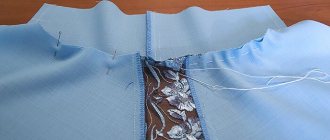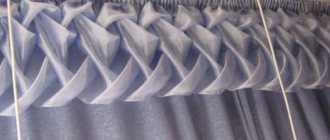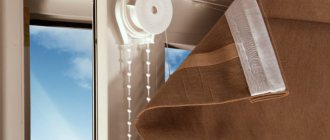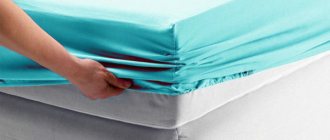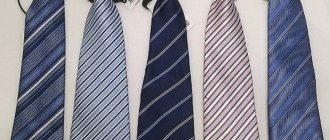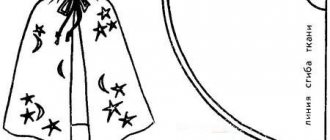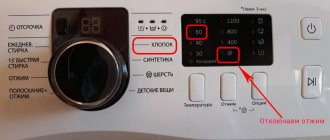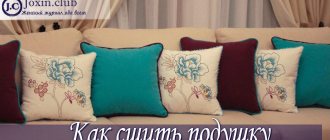A sheet with an elastic band is a practical, comfortable piece of bed linen. Many housewives buy textiles with elastic bands in the store, others try to make them on their own. What fabric to choose and make a pattern, what tools you will need during sewing and how to sew a sheet with an elastic band - all the answers are prepared for you below.
What you will need before you start
It is not difficult to sew a sheet on an elastic band. It is advisable to have minimal experience in using ready-made patterns, the ability to sew on a sewing machine, and to sew by hand. You can use a ready-made pattern or create it yourself. Difficulties may arise when processing corner edges of textiles that are rounded. The smoothed corners should perfectly follow the curves of the mattress. The main task is to take accurate measurements of the sleeping area, taking into account allowances and hems under the elastic band. Prepare sewing supplies, fabric, make a paper pattern, make markings on the fabric.
Tools and materials
Before starting sewing, it is advisable to prepare the fabric and sewing accessories:
- Large scissors, better tailor's ones. Will be needed for cutting fabric;
- small scissors with a long nose for fixing stitched seams and cutting threads;
- piece of fabric;
- elastic bands for sheets are narrow or wide at your personal discretion;
- a long meter straight ruler, a small triangle for creating patterns and accurately marking angles;
- thick Whatman paper, a piece of graph paper, tracing paper for creating a pattern;
- sewing machine;
- tailor's chalk, a piece of dry soap, a simple pencil for marking;
- threads to match the textile;
- English needles with a blind cap;
- a pin for threading the braid into the drawstring.
Choosing the shape and size of a sheet with an elastic band
The product must match the dimensions and shape of the mattress. More often there are mattresses with oval corners, less often with sharp ones. The configuration and individual characteristics of the bedding determine the shape and size of the sheet. Basically, bedding has a rectangular shape. If the mattress has a label, it must indicate the main dimensions - length, width, height. In calculations you can rely on these measurements. Or calculate it yourself by measuring. Standard for elastic band products in centimeters:
- 160x200, 140x200 (for adults);
- 120x60, 90x200 (baby, teenage);
- 180x200 (for two people).
Choosing fabric for sewing fitted sheets
It is better to sew sleepwear from natural fibers. It absorbs sweat well, does not irritate the skin, is hypoallergenic, and pleasant to the touch. Cotton fabric with natural fibers - cotton, muslin, cambric, chintz, calico, calico, poplin. For bedding, choose fabrics with a stronger weave that do not wear out for a long time and keep their shape well. Linen, cambric, poplin, cotton are durable, hygroscopic materials that can withstand many washes, do not create static electricity, and are breathable. Thinner muslin and chintz are suitable for a child. In cold weather, choose flannel or knitwear.
Which material to choose
In order to sleep comfortably at night, most often they choose a material without the presence of synthetics. These are linen, cotton, calico, satin. These materials do not electrify, absorb moisture well, do not irritate the skin, and do not cause allergies.
To prevent the future item from shrinking, natural fabrics must first be washed in hot water with soap at a temperature of approximately 40°, rinsed, dried and ironed with a hot iron. How much fabric should I take? Take it taking into account shrinkage. Cotton material will shrink 4% along the length and 1% across the width.
The knitted sheet has proven itself to be excellent. Soft plastic products keep their shape well even after many machine washes.
Advantages of new knitwear:
- does not wrinkle, no need to iron
- usually does not fade, has a stable color
- does not cause allergies
- wear-resistant
Step-by-step guide on how to sew a fitted sheet with your own hands
To sew a sheet with an elastic band you need:
- prepare sewing supplies, woven fabric;
- measure the mattress with a measuring tape;
- according to the measurements, make a paper pattern;
- transfer its outline onto the textile fabric;
If you lack sewing experience, study our video guide “how to sew a sheet with an elastic band”, watch the master class, photos.
Patterns and calculations
Before constructing the pattern, measure the resting place where the bedding will be sewn. When taking measurements, take into account all the curves and curves of the mattress. Basic measurements:
- bed length;
- mattress height. We increase the figure by 1.5-2 times per hem. To the edge we add 1.5 for allowances and 2.5-3 cm for the drawstring;
- mattress width;
- if desired, the amount of hem under the mattress can be increased;
The standard bed hem size for an adult is 15 cm, for a child - 7-10 cm, for a double bed - 18-22 cm. A voluminous mattress requires more hemming, then the sheet will be securely fastened and fit snugly to the bed.
The pattern of a sheet with an elastic band for the standard model 90x20x200 requires a textile fabric 165 cm wide and 275 cm long. The width of the fabric is the sum of the height (20+15+2.5) and width 90 (20+15+2.5). Length from height and length: (20+15+2.5) 200 (20+15+2.5), where height 20, hem 15, allowance 1.5.
Cutting in accordance with the calculations and sketch made
You can cut textiles using a ready-made pattern or apply markings directly to the textile according to the sketch. Apply contours and allowances on the wrong side of the fabric. If there is not enough fabric, it needs to be lengthened; add the missing piece in the place that will be covered with pillows. Use tape wider than 1 cm, it is more durable, fits tightly to the mattress, and stretches less. The length of the elastic band is 10-15 cm longer than the perimeter of the product. Before cutting, it is better to wet and dry the fabric made from natural fibers so that it shrinks naturally.
Connecting all the corners of the future sheet
Using a sewing machine, connect all the corners of the product, sew from the wrong side with a straight stitch. If you have an overlocker, finish each edge of the sheet with a curly stitch to prevent the threads from unraveling. You will get four connecting seams along the edges that form the frame of the product.
Use scissors to make serifs on the edges of the fabric.
At each end of the product, mark the beginning and end of sewing in the elastic band. Each notch extends approximately 50 cm into the length of the product on each side. This option of sewing in an elastic band makes it easier to care for the item, easy to wash, easy to iron. Bedding with a rubber band sewn around the entire perimeter is difficult to iron and fold for storage. Underwear with elastic is suitable for babies and teenagers.
How to sew a sheet with an elastic band, lining the edges
First, decide how much elastic you need. Sewing will be along each edge of the item or only at the end edges. When sewing the tape along the border of the item, add 50+90+50, it turns out 190 cm, where the width of the mattress is 90 cm, the notch is 50 cm. The amount of tape calculated for each end side is 95 cm (190:2).
How to sew an elastic band to a sheet? Stitch the braid into the fold of the drawstring from mark to mark. Stretch the braid a little, sew without touching the braid, which will later allow you to replace it with a new one. We sew the places in the area of the notches tightly, the tape will be firmly fixed in the rut. Similarly, attach the braid from the other edge.
Finishing the hem edge
Sew the free edges not touched by the elastic using a straight stitch along the hem line. Make the seam closed so that the fabric fibers and threads do not come out. To get a nice, even seam, secure the fold line with safety pins and stitch.
Securing the elastic band
The rubber band on the mattress can be secured using an additional rubber clamp. At each corner of the product, sew a regular, preferably wide, elastic band, pull the item onto the lounger, and tuck the fasteners under it.
Several step-by-step methods for making a fitted sheet with your own hands
The principle of making a sheet on a stretch tape is the same, the difference lies in the shape of the product and its size. Follow the sewing instructions and get a beautiful, practical item.
Method one: sew a product with an elastic band onto a mattress measuring 160x200 cm
First prepare:
- Decorate textiles. Moisten the fabric using a steam iron or steamer. Dry. The procedure eliminates shrinkage and deformation of the fabric;
- make a paper pattern;
- add 40 cm on all sides;
- Fold the rectangular fabric in half lengthwise;
- measure 40 cm on each side at the corners of the product, cut out squares, iron;
- fold the edges of each corner together with the right sides inward, stitch, turn out, iron;
- using a hot iron, make a hem for the elastic, place an elastic band under it, and carefully sew;
- secure the ends of the braid with machine stitching;
- If the tape is provided along the entire length, lay the tape not only in the corners.
Method two: product for a mattress 200x200 cm
The 200x200 mattress belongs to European standards. The width of the cotton fabric is 220 cm. The production of Euro sheets is somewhat different from generally accepted standards. To withstand Euro size, we increase the fabric by adding additional woven pieces. Add 75-80 cm on top, the seam will be hidden by pillows. Sew individual parts of the fabric using a closed French seam. We add pieces 40 cm wide to each edge along the entire length; the additional fabric will be used for the height of the mattress, seam allowances and hems. Your next steps:
- fold the fabric in half lengthwise, cut out the corners;
- connect the open corner cuts together, stitch, smooth;
- form a double hem for the drawstring under the elastic (along the perimeter or at the ends);
- place braid at the end corners and stitch;
- If a rubber band is provided around the perimeter of the product, use a pin to pull the elastic band into the unstitched small hole under the drawstring and sew the ends of the band.
Method three: step-by-step sewing for beginners
For women without sewing experience:
- study the manual, our video lessons;
- make a paper pattern;
- cut the textile according to the sketch, taking into account the parameters, hem;
- sew the ribbon along the long side or corner;
- process the joints of the seams with an overlock, zigzag or linen stitch;
- iron it, pull it onto the mattress, secure the corners with clamps.
Method four: how to sew a sheet with an elastic band for a crib
A sheet with an elastic band for a crib is necessary for a child. Sewing bedding for your baby yourself can solve this problem. The principle of calculating the material, constructing the pattern, and marking on the fabric is similar to the adult models. Only the numbers are different. The height of the children's mattress is 10 cm, the hem is 7-10, the allowance is 2, the width and length are determined by the dimensions of the bed. Cut the fabric, stitch open edges, hem, and form a drawstring line. For a crib, place the tape along the length of the sheet. Secure the item using fasteners.
Round sheet with elastic band
Sewing a sheet with a round elastic band is easy. Round shaped bed linen is rarely found on sale. Pattern making and sewing are different from rectangular items.
Pattern of a sheet with an elastic band
It is better to make markings for a product in the shape of a circle on paper. Taking into account the diameter of the bed, the height of the mattress, the fabric for folding and hemming. Fold the paper in half twice, measure half the diameter-radius along the edge from the center point, repeat the movement every 10-15 cm, leading to the other edge. This results in an arcuate line. Trim off the excess paper in an arc. Unfold it - it turns out to be a circle. Attach the pattern to the sleeping area and check the dimensions.
Sewing a round sheet
The main fabric has the shape of a circle onto which the facing is sewn. The strip of fabric will go on the side of the mattress, on the hem and drawstring. The width of the strip is equal to the height of the mattress, the width of the fold is 10 cm, the allowance is 2 cm, the space for the tape is 2 cm. Several strips of fabric can be used for facing. We fix the pattern on the fabric, cut it out with an increase of 0.5-1 cm for stitching seams. Trim off the excess fabric. We cut the strips taking into account the height, hems, and allowances. We stitch together. We sew a long facing along the edge of the round part, form a drawstring line on the open part of the strip, and stitch it. We process the seams with an overlocker or close them with a French seam. Insert an elastic band.
What pattern is needed
The creation of any new thing begins with its visual display on a piece of paper. This is especially true for novice craftswomen who cannot yet “by eye” determine the size, correctness of tailoring and other details. Patterns for fitted sheets can be drawn on paper or directly on fabric.
When creating a pattern, add 0.5 cm to the seams on each side. Leave 1.5 cm on the drawstring through which the elastic will be pulled.
The figure shows the top part (oval, round, rectangular) indicating the dimensions, the hem, the width of which is determined based on personal preferences and the available material. The figure also shows allowances, cut locations, and elastic band width.
Auxiliary devices for fixing the sheet
To prevent the sheet from rolling into waves and folds during sleep, secure the rubber band to the mattress using linen fasteners or clips. The T-shaped fastener consists of three elastic elements with a metal clothespin at each end. Designed to be secured to each corner of the mattress.
Alligator clips on a thin elastic band with a double clamp are designed to secure the edge of the sheet along the entire length. Located under the mattress. Double clamps are a wide rubber band with metal clips at both ends. If you don't have linen clips on hand, use paper crab clips. You can secure the sheet to the mattress using an elastic band. Sew an elastic band along each edge diagonally and drape it over the mattress.
Types of holders and fastenings
To prevent the sheet from crumpling, it is attached to the mattress using holders.
Special holders
In order to prevent crumpling and gathering of bed linen, specialized triple fastenings are used. They are strips of durable fabric connected in the shape of the letter T. At the end of each of them there is a clip. The central one is attached directly to the corner of the sheet, the two adjacent ones are attached nearby. In this case, the fastening is positioned in such a way that all its parts, except for the clamps, are located under the mattress.
The advantages of such fasteners include efficiency. The disadvantages are an unattractive appearance (the clips often stick out) and an increased load on the bed linen, which significantly reduces the service life of the textiles.
Crocodiles
Also, in order to secure the sheet, tension tapes with fastenings called “crocodile clips” are used. They are placed right in the middle of the mattress, they go right under it. In this case, the “crocodiles” are attached to the edges of the linen. Usually 3 - 4 tapes are used. This ensures maximum fastening efficiency. If necessary, use more.
The main advantage of this type of fixation is its high reliability. If the tapes are properly tensioned, the fabric will probably not move anywhere. And the main disadvantage of the method is increased wear of textiles. The fact is that “crocodiles” violate the integrity of the fabric, as a result of which small holes, barely visible to the eye, appear on it. Because of this, the service life of the product is significantly reduced. At the same time, a damaged item that has been badly worn by clamps is unlikely to be repaired later.
Double clamps
They are an analogue of triple clamps, but they are attached not to the corner of the textile, but to the sides of it. The main advantage of this approach is the reduced load on the fabric, which significantly reduces wear. But there are also disadvantages. Since there was one less tape in the mount, it became worse to hold. When using a double clamp, the corner of the sheet often becomes puffy, as a result of which it has to be tucked under the bed quite often.
Available means
Most often, housewives make holders themselves. Here are the most common varieties that you can make yourself.
- Rubber. The simplest and cheapest option. The elastic can be sewn in two ways. The first is creating loops at the corners. They are thrown over the mattress, thus firmly fixing the linen. The second method is to place the elastic along the edges of the sheet. It is important that the product is significantly larger than the mattress and is able to wrap around it. In this case, the sheet is pulled like a cover. The advantage of elastic bands is their low price and ease of fastening. The main disadvantage is that after a certain time it stretches and loses its original properties.
- Stationery clips. Some types of mattress covers allow you to secure the fabric using paper clips. The main advantage of this method is its very low cost and incredible simplicity (you don’t even need to sew anything). However, it also has some disadvantages. There are two main ones: insufficient reliability and not very pleasant appearance.
- Curtain clip. In order to secure textiles, “crocodile clips” are used for curtains. This method is similar to the previous one and has all the same advantages and disadvantages. However, a curtain clip provides a more secure hold. Plus it's much easier to hide.
- Clothespins. Essentially, the method is similar to the previous one. But here, instead of curtain clips, plastic clothespins are used. The good thing about this method is that it causes less damage to textiles. Otherwise there is not much difference.
- Buttons. The essence of the method is simple: buttons are sewn to the mattress along the entire perimeter, holes are made in the sheets, and then they are stitched. As a result, both objects can be fastened to each other, in which case slipping is excluded. The advantages of the method are simplicity and low cost. The main drawback is that the buttons come off from time to time. This happens especially often during washing.
- Loops. Loops are sewn along the edges of the fabric (a pair from each corner). When making the bed, they are tied so that they tightly hug the mattress cover. As a result, the laundry does not slip. The advantages of the method are simplicity and low cost. The disadvantage is that the loops put a certain amount of stress on the sheet and can even tear it.
Sewing technology with clasps
Clasps are transverse elastic fasteners. Externally they resemble trouser suspenders. The sewing technology is standard for a sheet with an elastic band. Clasps hold textiles on the mattress on all sides; there are angular and transverse ones.
The calculation rules, pattern making, technology for sewing a sheet with an elastic band, and fastenings to the mattress are identical and the same for all sizes. Use step-by-step instructions, take into account the individual dimensions of the sleeping place for calculations, follow the sewing technology.
